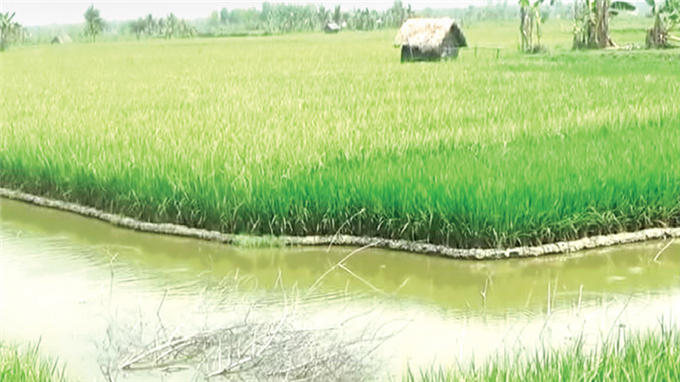Fish farming in paddy fields brings high profit to farmers

Fish farming in paddy fields by using a new technology has been gaining popularity in Jessore district’s Keshabpur upazila, Bangladesh.
According to sources in the upazila fishery office, there are two ways of fish farming in paddy fields—culturing fish along with paddy and fish culture before cultivation and after harvesting of paddy.
A total of 9,000 hectares in 25 beels in Keshabpur upazila were earmarked for fish and paddy cultivation, of which 4,296 hectares had been fixed only for fish cultivation from April to December.
After that, IRRI cultivation was initiated in that beel from January. A large number of people in the upazila have been farming Rui, Katla, Mrigal, Kalibaus, Pangash, Tilapia, Sharputi, Silvercarp and Thai Koi in the low-laying areas.
Besides, farmers have been growing vegetables in the adjoining lands for the past two years, making for bumper production and economic development.
The farmers in the area finish cutting paddy in April. For cultivating fish, these lands need no extra fertilisers.
Sources also said 4,246 fish farms in Keshabpur upazila produced 18,225 metric tonnes of fish against the annual demand of 5,520 metric tonnes. The produce included 970 tonnes of Golda prawn and 225 tonnes of Bagda prawn, which earn huge amounts of foreign exchange. After meeting the local demand for fish, about 13,000 tonnes can be exported to other districts.
In these fish farms, about 15,840 hectares were used for Boro paddy cultivation this season, with a targeted production of 88,704 tonnes.
Mohashin, a villager from Mongol Coat, told The Independent that fish farming in paddy fields had initiated a new chapter in the fisheries sector and was gaining popularity in the district.
He also said that fish farming in paddy fields was very profitable as it created employment for rural people and fulfilled nutrition demands. Abdul Kader and Ripon Sarker of Gourighona village echoed this sentiment.
Keshabpur upazila fisheries officer Rajkumar Biswas said that at present, there were 4,246 fish farms in Keshabpur upazila and the farmers gained good knowledge of aqua culture by cultivating fish and paddy on the same land. "The farmers of the upazila may reap rich dividends within a very short period by cultivating fish and paddy in the same land,” he added.
Editor: John Li